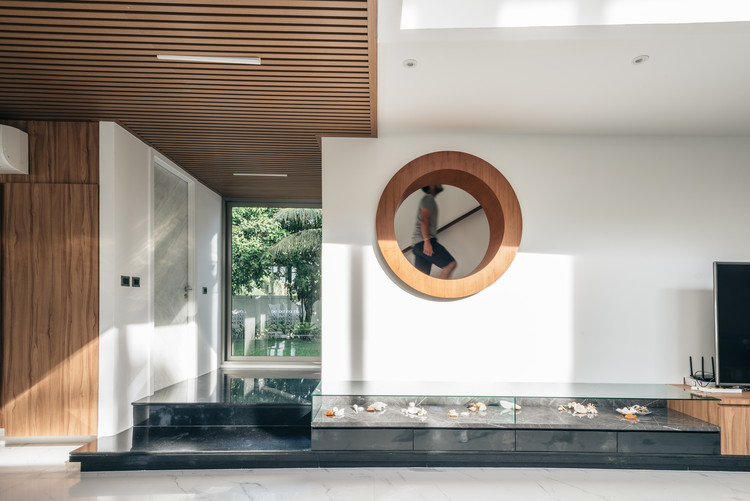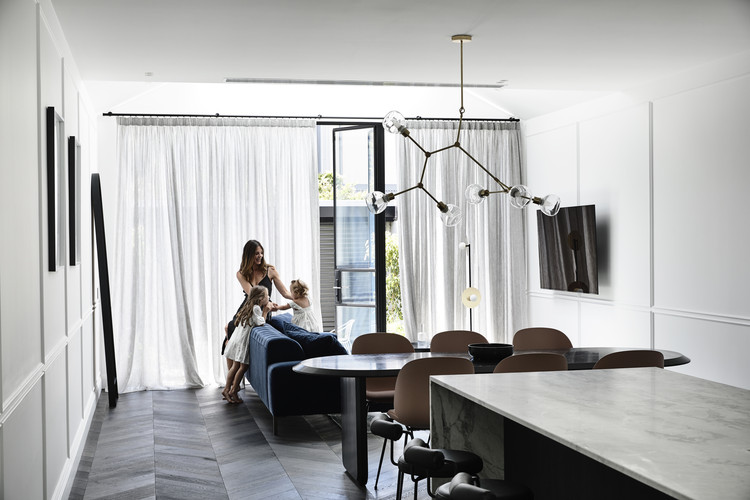Casa Cook Kos Hotel Mastrominas ARChitecture
2018-01-03 03:00
© George Fakaros
乔治·法卡罗斯


架构师提供的文本描述。CasaCookΚοs是一家新的五星级度假酒店,拥有216个床位,占地29.080平方米,位于希腊爱琴海东南部的科斯岛上。
Text description provided by the architects. Casa Cook Κοs is a new 5 star resort hotel of 216 beds in a 29.080 square meters beachfront plot, located on the greek island of Kos, in the south east Aegean Sea.
© George Fakaros
乔治·法卡罗斯


建筑设计试图重新定义旅游住宿作为一种提供的文化产品的意义,并将其推广为客人的体验,将其与地方、历史和岛屿文化联系起来。
The architectural design attempts to redefine the meaning of tourism accommodation as an offered cultural product and to promote it into an experience for the guest, connecting him with the place, the history and the island’s culture.
这一办法是全面的,由总体规划(城市一级)以及建筑设计、室内设计、设施(例如美食体验)以及娱乐方面(例如音乐)来实施。
The approach is holistic and is carried out by the master plan (urban level), as well as the architectural design, the interior design, the facilities (e.g. gastronomic experience) and furthermore the recreation aspects (e.g. music).
© Georg Roske
乔治·罗斯克


实现这一目标的方法是取消对酒店的刻板印象,创造一种另类的接待空间,让客人感觉自己住在朋友家,营造一种放松的氛围,在这种氛围中,人们会随心所欲地、谨慎地提供豪华服务。简单的材料、原材料表面、非白色立方平面和干燥的石墙,都是由松树构成的。棕榈树、橄榄树以及芳香的草药。
The goal was achieved by the abolishment of the stereotype of the hotel and the creation of an alternative hospitality space where the guest feels like living in a friend’s house, a relaxed atmosphere, where luxury services are offered carelessly and discreetly. Simple materials, raw surfaces, off-white cubic plain forms and dry stone walls, are framed by pines, palm and olive trees as well as aromatic herbs.
© Georg Roske
乔治·罗斯克


经典的主楼被解构。公共区域获得了传统希腊聚落的城市布局。围绕中央广场,主要的公共功能是在四个单独的建筑物:接待,行政,酒吧与商店和图书馆。
The classic main building is deconstructed. The public area acquires the urban arrangement of a traditional greek settlement. Around the central square, the main public functions are articulated in four individual buildings; the reception, the administration, the bar with shop and the library.


在主广场和海滩俱乐部之间的连接轴上,一个将满足底层水疗中心建筑的设计,该建筑采用朴素而朴素的模块化立方体建筑。温泉提供一系列独特的选择,包括传统的火腿,室内游泳池,健身房和户外瑜伽空间。
In the connecting axis between the main square and the beach-club, one will meet the ground floor spa building which is designed in a plain and modest modular cube-shape architecture. The spa offers a unique range of alternatives including traditional hamam, indoor pool, gym and outdoor yoga space.
© George Fakaros
乔治·法卡罗斯


中央通道驱车到主要的餐厅/海滩俱乐部建筑群,这构成了一个交易从建设地区到海滩。它连接和服务两者,内主游泳池区和海滩。北木阳台监督沙丘和海滩,在温暖的日子里提供了充足的住所。
The central path drives to the dominant restaurant/beach club complex which constitutes a transaction from the built area to the beach. It connects and serves both, the inner main pool area and the beach. The north wooden veranda oversees the sand dunes and the beach, providing an abundant shelter during warm days.
© George Fakaros
乔治·法卡罗斯


建筑物的概念被废除,设施被自由放置在棚子下。该地区是根据天气条件调整的一系列大滑动窗框,秘密地位于特殊的壁龛。当“旋律”,强烈的北风吹,海滩前窗框展开,保护中央游泳池和内游廊区。在寒冷的日子里,棚子可以转换成一个框架建筑,无障碍的视野。
The idea of the building is abolished and the facilities are freely placed under sheds. The area is adjusted according the weather conditions by a series of big sliding window frames that are secretly located in special niches. When “meltemi”, the strong north wind blows, the beach front window frames are unfolded, protecting the central pool and the internal verandas zone. During chilly days, the sheds can be transmuted into a framed building with unobstructed views.
Restaurant Floor Plan
餐厅楼面图则


房间的类型由三种不同的变体组成。标准双人间在一楼或两层楼的“小房子”中分一至三组分配。另一种选择是“有起居室的房屋”,由两到三个人组成的综合体开发,共用一个游泳池和一个内部院子。最后,一间或两间卧室的“大房子”,有私人游泳池和庭院。
The typology of the rooms consists of three different variants. The standard double rooms are allocated in groups of one to three in “small houses” which are ground floor or two storeys buildings. Another option is the “houses with living room” that are developed in complexes of two or three, sharing a pool and an internal yard. Finally, the “big houses” of one or two bedrooms, with private pool and yard.
© Georg Roske
乔治·罗斯克


根据房间类型,这些房子位于三个区域。建筑布局及其立体式平面图是指爱琴海群岛聚落的传统建筑和城市布局,它与狭窄的小径相结合,导致了意想不到的开口、外部楼梯和室外休息区的建造。
The houses are located in three zones according to the room typology. The building allocation and their cubic plain forms refer to the traditional architecture and urban arrangement of the Aegean islands settlements. The concept is integrated with narrow paths that lead to unexpected openings, external staircases and built outdoor sitting areas.
© George Fakaros
乔治·法卡罗斯






























































































Architects Mastrominas ARChitecture
Location Kos, Greece
Architect in Charge Ilias Mastrominas
Art Direction/Interior Design Lambs and Lions, Berlin
Area 5771.0 m2
Project Year 2017
Photographs George Fakaros, Georg Roske
Category Hotels
Manufacturers Loading...
























